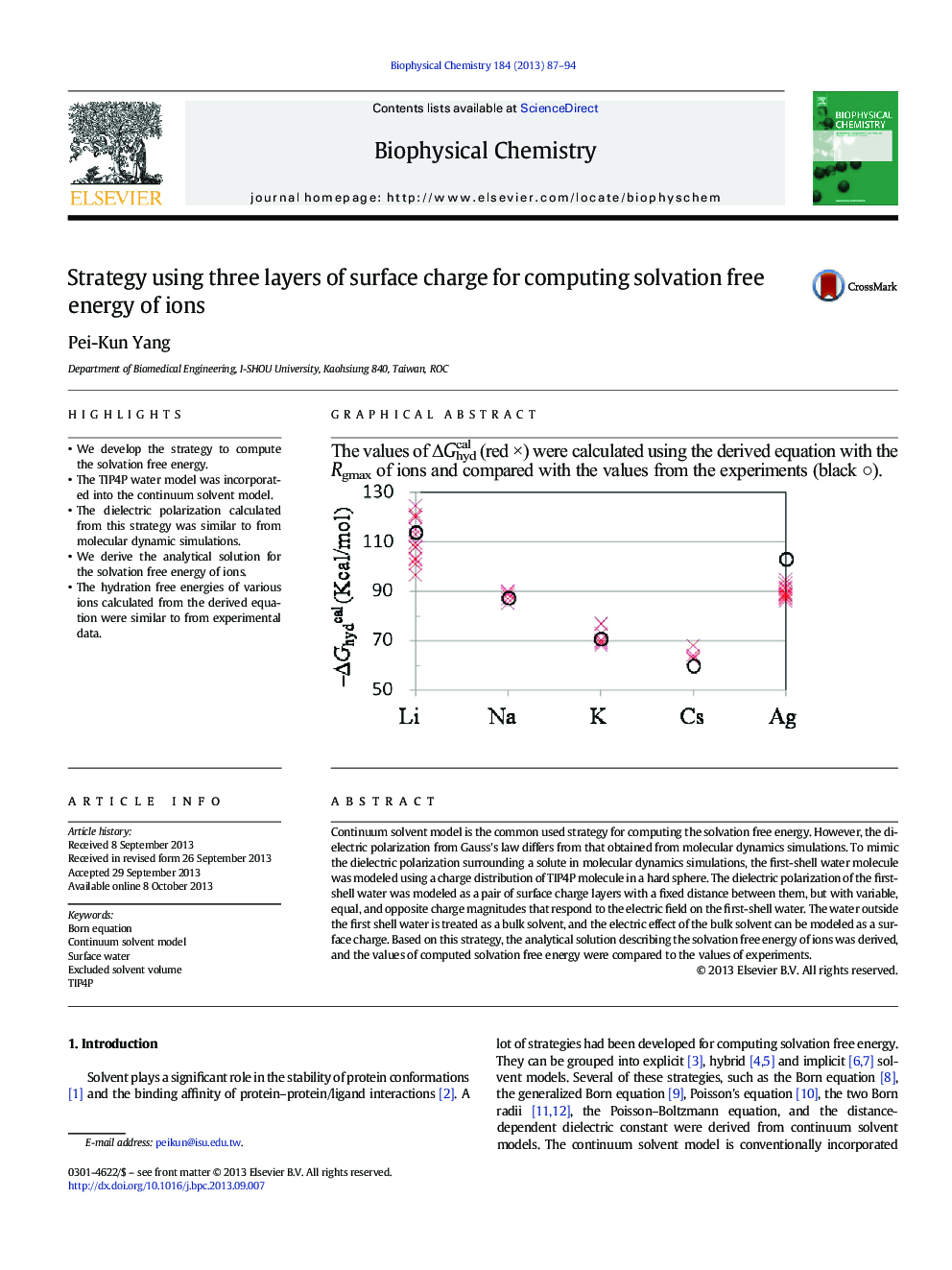| کد مقاله | کد نشریه | سال انتشار | مقاله انگلیسی | نسخه تمام متن |
|---|---|---|---|---|
| 5371006 | 1503930 | 2013 | 8 صفحه PDF | دانلود رایگان |
- We develop the strategy to compute the solvation free energy.
- The TIP4P water model was incorporated into the continuum solvent model.
- The dielectric polarization calculated from this strategy was similar to from molecular dynamic simulations.
- We derive the analytical solution for the solvation free energy of ions.
- The hydration free energies of various ions calculated from the derived equation were similar to from experimental data.
Continuum solvent model is the common used strategy for computing the solvation free energy. However, the dielectric polarization from Gauss's law differs from that obtained from molecular dynamics simulations. To mimic the dielectric polarization surrounding a solute in molecular dynamics simulations, the first-shell water molecule was modeled using a charge distribution of TIP4P molecule in a hard sphere. The dielectric polarization of the first-shell water was modeled as a pair of surface charge layers with a fixed distance between them, but with variable, equal, and opposite charge magnitudes that respond to the electric field on the first-shell water. The water outside the first shell water is treated as a bulk solvent, and the electric effect of the bulk solvent can be modeled as a surface charge. Based on this strategy, the analytical solution describing the solvation free energy of ions was derived, and the values of computed solvation free energy were compared to the values of experiments.
The values of ÎGhydcal (red Ã) were calculated using the derived equation with the Rgmax of ions and compared with the values from the experiments (black â).
Journal: Biophysical Chemistry - Volume 184, 31 December 2013, Pages 87-94
